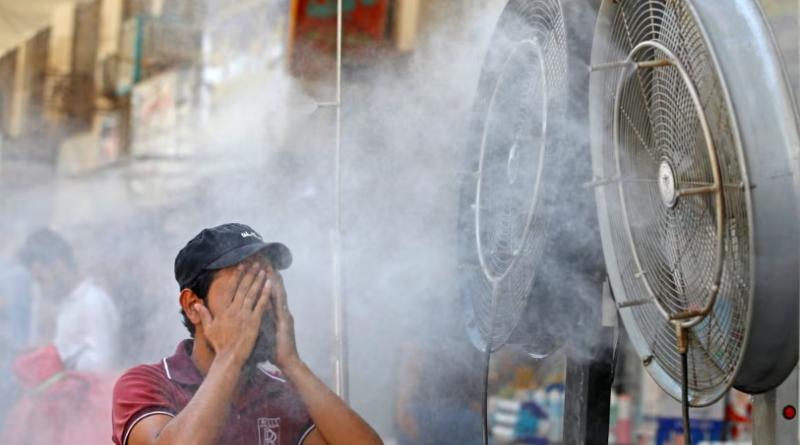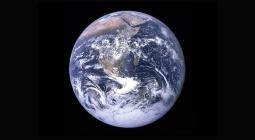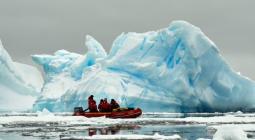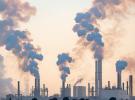The climate emergency really is a new type of crisis – consider the ‘triple inequality’ at the heart of it

Stare at a climate map of the world that we expect to inhabit 50 years from now and you see a band of extreme heat encircling the planet’s midriff. Climate modelling from 2020 suggests that within half a century about 30% of the world’s projected population – unless they are forced to move – will live in places with an average temperature above 29C. This is unbearably hot. Currently, no more than 1% of Earth’s land surface is this hot, and those are mainly uninhabited parts of the Sahara.
The scenario is as dramatic as it is because the regions of the world affected most severely by global heating – above all, sub-Saharan Africa – are those expected to experience the most rapid population growth in coming decades.
But despite this population growth, they are also the regions that, on current trends, will contribute least to the emissions that drive the climate disaster. So extreme is inequality that the lowest-earning 50% of the world population – 4 billion people – account for as little as 12% of total emissions. And those at the very bottom of the pile barely register at all. Mali’s per capita C02 emissions are about one-seventy-fifth of those in the US. Even if the lowest-earning third of the global population – more than 2.6 billion people – were to raise themselves above the $3.2-a-day poverty line, it would increase total emissions by a mere 5% – that is, one-third of the emissions of the richest 1%.
Half the world’s population, led by the top 10% of the income distribution – and, above all, by the global elite – drive a globe-spanning productive system that destabilises the environment for everyone. The worst effects are suffered by the poorest, and in the coming decades the impact will become progressively more extreme. And yet their poverty means they are virtually powerless to protect themselves.
This is the triple inequality that defines the climate global equation: the disparity in responsibility for producing the problem; the disparity in experiencing the impacts of the climate crisis; and the disparity in the available resources for mitigation and adaptation.
Not everyone in the danger zone of climate breakdown is poor and powerless. The American south-west has the resources to help itself. India is a capable state. But global heating will pose huge distributional problems. How will climate refugees be resettled? How will the economy adapt? For fragile states such as Iraq, it may prove too much. The risk is that they will tip from just about coping into outright collapse, failing to provide water and the electricity for cooling – the bare essentials for survival in extreme heat. In Iraq this summer, thousands of people huddled in their air-conditioned cars, running their engines for hours just to survive heat spikes that exceeded 50C.
You might say, plus ça change. The poor suffer and the rich prosper. But the consequences of the climate triple inequality are radical and new. Rich countries have long traded on unequal terms with the poor. During the era of colonialism, they plundered raw materials and enslaved tens of millions. For two generations after decolonisation, economic growth largely bypassed what was then known as the third world.
Since the 1980s, with the acceleration of China’s economic growth, the scope of development has dramatically widened. The middle 40% of the world’s income distribution now account for 41% of global emissions, meaning they have achieved a considerable level of energy consumption. But this “global middle class”, concentrated above all in east Asia, crowds out the carbon budget remaining for those on the lowest incomes, and their growth inflicts irreversible damage on some of the poorest and most disempowered people in the world.
This is the historic novelty of the current situation. As we run ever closer to the edge of the environmental envelope – the conditions within which our species can thrive – the development of the rich world systematically undercuts the conditions for survival of billions of people in the climate danger zone. They are not so much exploited or bypassed as victimised by the climactic effects of economic growth taking place elsewhere. This violent and indirect entanglement is new in its quality and scale.
Violent and unequal relationships between groups usually involve some degree of interaction and can, as a result, be resisted. Workers can strike. Those caught in unfair trading relationships can boycott and impose sanctions. But arms-length ecological victimisation entails no such relationship and offers correspondingly fewer channels for resistance from within the system. It is possible that blowing up pipelines that carry energy from poor countries to rich consumers will emerge as a form of protest. That would certainly send a signal. But can we not hope for more constructive responses to the triple inequality?
This question is still what gives such huge importance to the global climate conferences such as Cop28, which starts on 30 November. They may seem like staid and ritualistic affairs, but it is in such venues that the lethal connection between oil, gas and coal production, rich-world consumption and the lethal risks facing those in the climate danger zone can be articulated in political form.
It is on that stage that activists and governments can pillory the disgraceful refusal of rich countries to cooperate in the establishment of a loss and damage fund to compensate those countries that are most in harm’s way. The need for such a fund was recognised in principle at Cop27 in Egypt. But since then the resistance of US and European negotiators has hardened. As we approach Cop28, the organisation and the financing of the fund are yet to be settled.
Such a fund is no solution to the problem of the triple inequality. For that we need a comprehensive energy transition and new models of truly inclusive and sustainable development. But a loss and damage fund does one essential thing. It recognises that the global climate crisis is no longer a problem of future development. We have entered the stage where the failure to urgently address the mounting crisis becomes an active process of victimisation. A victimisation that cries out, at least, for an admission of responsibility and adequate compensation.





